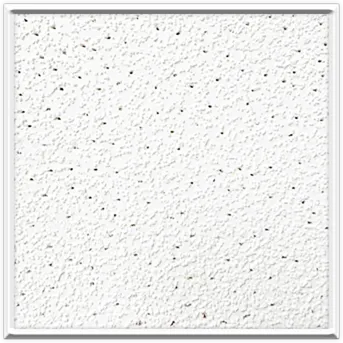2 月 . 11, 2025 18:43 Back to list
types of grid ceiling tiles
Grid ceiling tiles, often underestimated, serve a dual purpose in architecture and interior design — providing both functional and aesthetic value. These tiles are essential in various commercial and residential settings, offering a convenient way to conceal unsightly wiring, plumbing, and ductwork while adding a decorative touch. Understanding the different types of grid ceiling tiles available can elevate any project. Here's an in-depth look at the popular options, each with their unique features
Gypsum Ceiling Tiles Known for their fire-resistant properties, gypsum ceiling tiles are a safe choice for public buildings, schools, and libraries. These tiles provide good heat insulation and are capable of being molded into various shapes and designs. Gypsum tiles often come in white or neutral tones, allowing them to seamlessly blend into any décor. They are particularly useful in areas where safety and aesthetics must go hand in hand, offering both visual appeal and crucial protection. Translucent Ceiling Tiles Ideal for those looking to incorporate innovative lighting solutions, translucent ceiling tiles allow light to diffuse gently across a room. These tiles are often used in modern office spaces, showrooms, and retail environments to create an inviting and well-lit atmosphere. By harnessing natural or artificial light, translucent tiles contribute to energy savings and ambiance enhancement. When paired with LED lighting, they can even offer dynamic color-changing effects, adding a futuristic look to any setting. Custom Ceiling Tiles For projects that demand a unique look, custom ceiling tiles provide endless possibilities. Designers can specify shapes, sizes, and finishes tailored to their specific needs, allowing for an entirely personalized ceiling experience. Customization is particularly useful in branding, where logos or specific color schemes can be replicated on the ceiling to reinforce a brand's identity. This option, though typically pricier, ensures that the ceiling becomes a defining feature of the space, leaving a lasting impression. In conclusion, the selection of grid ceiling tiles significantly impacts both the functionality and the visual appeal of a space. By choosing the right type based on the specific requirements of design, acoustics, durability, and budget, designers can expertly transform a room. Each type of tile holds its own set of advantages, allowing for creative flexibility and practical benefits, ultimately resulting in spaces that are not only beautiful but also efficient and purposeful.


Gypsum Ceiling Tiles Known for their fire-resistant properties, gypsum ceiling tiles are a safe choice for public buildings, schools, and libraries. These tiles provide good heat insulation and are capable of being molded into various shapes and designs. Gypsum tiles often come in white or neutral tones, allowing them to seamlessly blend into any décor. They are particularly useful in areas where safety and aesthetics must go hand in hand, offering both visual appeal and crucial protection. Translucent Ceiling Tiles Ideal for those looking to incorporate innovative lighting solutions, translucent ceiling tiles allow light to diffuse gently across a room. These tiles are often used in modern office spaces, showrooms, and retail environments to create an inviting and well-lit atmosphere. By harnessing natural or artificial light, translucent tiles contribute to energy savings and ambiance enhancement. When paired with LED lighting, they can even offer dynamic color-changing effects, adding a futuristic look to any setting. Custom Ceiling Tiles For projects that demand a unique look, custom ceiling tiles provide endless possibilities. Designers can specify shapes, sizes, and finishes tailored to their specific needs, allowing for an entirely personalized ceiling experience. Customization is particularly useful in branding, where logos or specific color schemes can be replicated on the ceiling to reinforce a brand's identity. This option, though typically pricier, ensures that the ceiling becomes a defining feature of the space, leaving a lasting impression. In conclusion, the selection of grid ceiling tiles significantly impacts both the functionality and the visual appeal of a space. By choosing the right type based on the specific requirements of design, acoustics, durability, and budget, designers can expertly transform a room. Each type of tile holds its own set of advantages, allowing for creative flexibility and practical benefits, ultimately resulting in spaces that are not only beautiful but also efficient and purposeful.
Latest news
-
Revolutionizing Interior Design with Ceilings t grid Suspended SystemNewsOct.29,2024
-
Revolutionizing Ceiling Design with ceiling access panel with Gypsum Tile WaterproofNewsOct.29,2024
-
Revolutionizing Interior Design with PVC Gypsum Ceiling: A Comprehensive GuideNewsOct.29,2024
-
Elevating Interior Design with High quality Mineral Fiber Ceiling TilesNewsOct.29,2024
-
Revolutionizing Interior Design with PVC Gypsum Ceiling: A Comprehensive GuideNewsOct.29,2024
-
Elevating Interior Design with High-Quality Mineral Fiber Ceiling Tiles: A Comprehensive GuideNewsOct.29,2024







